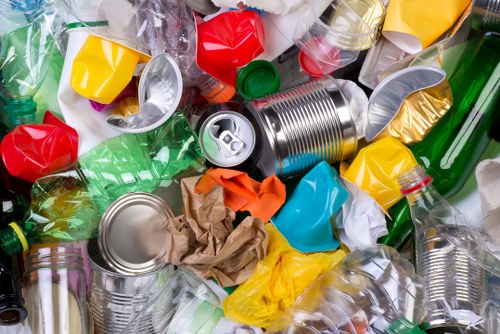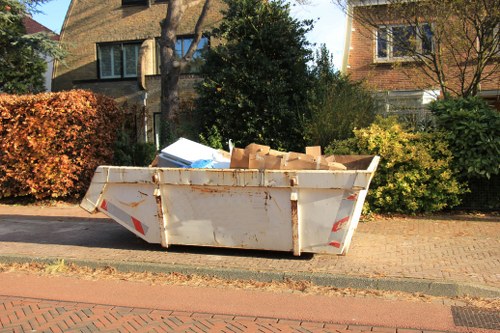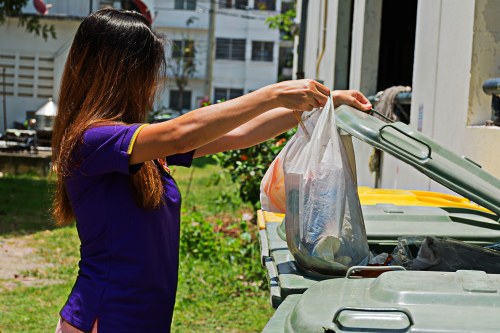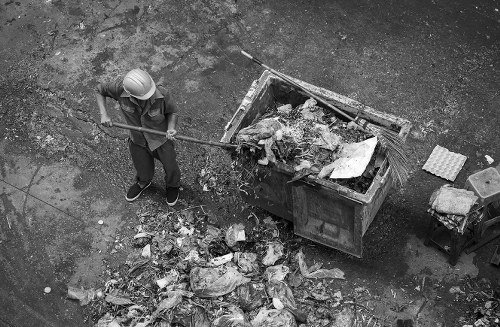Construction Waste Clearance in Hampstead

Embarking on a construction project in Hampstead? One crucial aspect that often determines the success of your endeavor is effective construction waste clearance. Proper waste management not only ensures a clean and safe working environment but also adheres to local regulations and promotes sustainability.
Hampstead, with its blend of historical charm and modern developments, requires meticulous attention to waste disposal. The process involves more than just removing debris; it encompasses the responsible handling of materials to minimize environmental impact.
In this article, we delve deep into the essentials of construction waste clearance in Hampstead, offering insights, best practices, and the benefits of partnering with professional services.

Understanding Construction Waste Clearance
Construction waste clearance refers to the systematic removal and disposal of debris generated during building projects. This includes materials like concrete, wood, metals, and other by-products.
Effective waste clearance ensures that construction sites remain organized, reducing hazards and enhancing productivity. Moreover, it plays a pivotal role in environmental conservation by promoting recycling and proper disposal.
In Hampstead, where environmental standards are stringent, adhering to waste management protocols is not just a legal obligation but a community responsibility.

Types of Construction Waste
Construction projects generate various types of waste, each requiring specific handling methods:
- Concrete and Masonry: Often recycled for use in new construction.
- Wood: Can be reused or processed into wood chips.
- Metals: Highly recyclable and valuable.
- Plastics: Needs careful sorting to prevent contamination.
- Drywall: Can be recycled but requires processing.
Proper classification and disposal of these materials are essential for efficient waste clearance.

Legal Requirements in Hampstead
Hampstead adheres to strict waste management regulations to ensure environmental protection and community well-being. Compliance is mandatory for all construction projects.
Key legal requirements include:
- Waste Separation: Segregating different types of waste at the source.
- Recycling Mandates: A certain percentage of waste must be recycled.
- Permits and Reporting: Obtaining necessary permits and maintaining accurate disposal records.
- Prohibited Dumping: Strict penalties for illegal disposal of hazardous materials.
Failure to comply can result in hefty fines and project delays, making it imperative to understand and follow these guidelines.

Benefits of Professional Waste Clearance Services
Engaging professional waste clearance services offers numerous advantages:
- Efficiency: Experienced teams ensure timely removal and disposal.
- Compliance: Professionals are well-versed in local regulations.
- Safety: Proper handling reduces the risk of accidents on-site.
- Environmental Stewardship: Enhanced recycling and responsible disposal practices.
By leveraging expert services, construction projects can maintain momentum while upholding high standards of waste management.

Best Practices for Construction Waste Clearance
Implementing best practices ensures that waste clearance is both effective and sustainable:
- Plan Ahead: Incorporate waste management into project planning.
- Educate Your Team: Ensure everyone understands the importance of proper waste handling.
- Use Quality Containers: Invest in appropriate bins and containers for different waste types.
- Regular Monitoring: Conduct periodic checks to ensure compliance and efficiency.
- Partner with Reputable Services: Collaborate with trusted waste clearance providers.
Adhering to these practices enhances overall project efficiency and sustainability.

Recycling and Sustainability
Recycling plays a crucial role in sustainable construction. By reusing materials, we reduce the demand for new resources and minimize landfill usage.
In Hampstead, many waste clearance services prioritize recycling, ensuring that materials like metal, wood, and concrete are processed appropriately.
Adopting a recycling-focused approach not only benefits the environment but can also lead to cost savings and improved project reputation.

Choosing the Right Waste Clearance Partner
Selecting a reliable waste clearance partner is vital for the smooth execution of your construction project. Consider the following factors:
- Experience: Look for companies with a proven track record in construction waste management.
- Compliance: Ensure they adhere to local regulations and standards.
- Services Offered: Comprehensive services, including sorting, recycling, and disposal.
- Reputation: Positive reviews and testimonials from past clients.
- Pricing: Transparent and competitive pricing structures.
Partnering with the right service provider can significantly enhance the efficiency and compliance of your waste clearance process.

Cost Considerations
Effective waste clearance should align with your budget without compromising on quality. Factors influencing cost include:
- Volume of Waste: Larger projects generate more waste, increasing disposal costs.
- Type of Waste: Hazardous materials may incur additional handling fees.
- Frequency of Clearance: Regular pickups can be more cost-effective than ad-hoc services.
- Recycling Rates: Higher recycling rates can reduce overall waste disposal costs.
It's essential to obtain detailed quotes and understand the pricing structure to make informed decisions.

Environmental Impact
Construction waste has a significant environmental footprint. Proper clearance and recycling efforts help mitigate these impacts by:
- Reducing Landfill Use: Minimizing the amount of waste sent to landfills.
- Conserving Resources: Reusing materials decreases the need for new resources.
- Lowering Carbon Emissions: Recycling processes generally consume less energy.
- Protecting Wildlife: Preventing waste from entering natural habitats.
By prioritizing sustainable waste clearance, construction projects contribute positively to environmental conservation efforts.

Case Studies: Successful Waste Clearance in Hampstead
Several construction projects in Hampstead have showcased effective waste clearance practices:
- Hampstead Residence Renovation: Implemented a comprehensive recycling program, reducing landfill waste by 40%.
- Commercial Complex Development: Partnered with a local waste clearance service, ensuring timely and compliant disposal of materials.
- Public Infrastructure Project: Utilized eco-friendly waste management strategies, enhancing project sustainability.
These case studies highlight the importance and benefits of efficient construction waste clearance.

Technological Advances in Waste Management
Advancements in technology have revolutionized construction waste clearance. Innovations include:
- Automated Sorting Systems: Enhance the efficiency and accuracy of waste segregation.
- Recycling Software: Tracks and manages waste streams for better accountability.
- Eco-friendly Disposal Methods: Reduce environmental impact through sustainable practices.
- Smart Bins: Monitor waste levels and optimize collection schedules.
Integrating these technologies can streamline waste management processes and promote sustainability.

Future Trends in Construction Waste Clearance
The future of construction waste clearance is geared towards greater sustainability and efficiency:
- Increased Recycling Rates: Striving for higher percentages of waste to be recycled.
- Circular Economy Models: Emphasizing the reuse of materials in new construction projects.
- Advanced Material Processing: Developing methods to handle complex waste materials.
- Policy Enhancements: Implementing stricter guidelines to ensure responsible waste management.
Staying abreast of these trends is essential for construction professionals aiming to enhance their waste management strategies.

Conclusion
Effective construction waste clearance in Hampstead is indispensable for the success and sustainability of any building project. By understanding the types of waste, adhering to legal requirements, and partnering with professional services, you can ensure a clean, safe, and environmentally responsible construction site.
Embracing best practices and staying informed about technological advances and future trends will further enhance your waste management efforts, contributing positively to both your project and the Hampstead community.
Contact us today to learn more about our comprehensive construction waste clearance services and how we can support your next project.